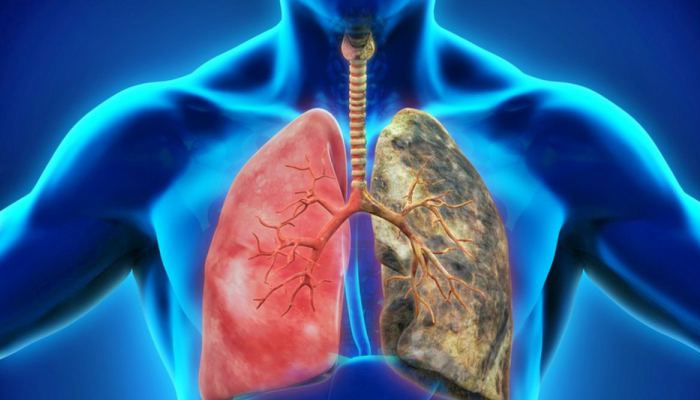What is E.P.O.C in Exercise?
The Basics of Excess Post-Exercise Oxygen Consumption (E.P.O.C) Every Personal Trainer Should Know
Known across the fitness industry as the after-burn effect, Excess Post-Exercise Oxygen Consumption (E.P.O.C) is a method used to increase the caloric burn of a workout long after it has ended.
As a PT, finding the perfect balance between working out too lightly and pushing too hard is essential for improving the physical fitness of your clients. E.P.O.C is the ideal indicator for measuring training load and creating the perfect workout. By incorporating E.P.O.C methods into your clients’ workout regimes it will be easier for you to help them achieve their goals faster – whether they’re interested in increased weight loss or heightened athletic performance – E.P.O.C can help to achieve both.
Because of this, incorporating E.P.O.C methods into your clients’ workout regimes can ultimately be great for your PT business as you’ll get a reputation as a PT who generates results, which will help you to attract more clients and ultimately grow your Personal trainer business. So, with that said, it’s important to understand and keep up to speed on:
- What exactly E.P.O.C is and why it happens?
- How to achieve E.P.O.C in exercise?
- What exercises cause E.P.O.C?
- The relationship between HIIT and E.P.O.C?
- How to incorporate E.P.O.C into your clients’ workout plans?
- Is E.P.O.C dangerous?
What is E.P.O.C and Why Does it Happen?
What we refer to as E.P.O.C or Excess Post-Exercise Oxygen Consumption, is used for recovery processes that bring the body back to its normal relaxed state. (E.g., returning core body temperature and heart rate to normal, repair of muscle tissue etc.). Women’s Health magazine explains that E.P.O.C refers to the increased level of oxygen your body consumes, and calories it burns to recover from working out.
What Exercises Cause E.P.O.C?
E.P.O.C is caused from exercise that is high intensity. Tracy Wehrman, an exercise physiologist at Maximized Potential, likes to tell people to picture E.P.O.C this way: You go on a run with your dog, and he suddenly breaks free to chase after a squirrel. Your casual jog turns into a sprint to catch him. After three minutes, you finally get a hold of the leash again but are exhausted and must find a bench to sit on and catch your breath.
After we warm up and begin a greater intensity of exercise, our body must choose which energy system to use based on our intensity level. During this time, it starts taking in more oxygen until we get our “second wind” and our oxygen demands are eventually met. This is most noticeable for runners, it’s that uncomfortable feeling you get before you arrive to that “second wind” state. The “second wind” state for most runners, is more comfortable as the body has adjusted to the activity and is in drive mode.
Unlike running, HIIT (High Intensity Interval Training) does not allow your body to enter the “second wind” state, as your heart rate is taken up and then dropped several times throughout the workout. Once exercise has stopped, the body continues to take in extra oxygen at a greater consumption than it would with a lower intensity training session. Put simply, the greater the intensity, the more oxygen and calories your body requires recovering from the exercise.
The Relationship Between HIIT and E.P.O.C
The intensity and duration of the HIIT workout determines how long it takes for our body to return to normal, thus affecting the “after burn”. When we don’t exercise hard, we don’t get a noticeable after burn. After high-intensity exercise, however, the after burn can last hours or even days. It is not unusual for a person’s calorie count to continue to climb as much as 300 kcals in the first hour after a 500 kcal effort. That intense after burn will not stay that high for more than a couple of hours at most. However, even 24-48 hours after the workout, you might still see an extra 25 kcals being burned in an hour.
Simply put, the relationship between HIIT and E.P.O.C is that the more intense your workouts, the more energy you will expend to assist with the recovery after the workout. Thus, the longer the recovery period, the longer your body will continue to burn calories.
How to Incorporate E.P.O.C Into Your Clients’ Workout Plans
By incorporating some high-intensity workouts (85% – 90% of HRM) into your clients’ weekly routine, you will not only help them burn more calories during the workout, but you will help them to burn additional calories during the recovery period as well. Tools like PTminder make it easy to communicate workout plans and track progress with your clients. When you give your clients the ability to easily track their progress they are more likely to stick around as your client and advocate for your PT brand.
How to Measure E.P.O.C?
E.P.O.C is a great way to measure the impact of physical activity on clients. The amount of E.P.O.C achieved during exercise is relevant to the training load and recovery time required. When you have a high training load and long recovery time, your E.P.O.C will be greater.
Who Should do E.P.O.C?
E.P.O.C is a great method to increase athletic performance and increase weight loss, however it’s not designed for everyone as the nature of the workouts are intense and can cause a lot of stress on the body.
Is E.P.O.C Dangerous?
As a PT it’s important to understand the risks of the fitness regimes and methods you promote. E.P.O.C is a generally safe method trainers can use to help their clients achieve a greater level of physical fitness and weight loss, however the nature of high intensity exercise required to reach it comes with a few risks’ worth noting:
- Increased risk of injury – because you need to encourage fast paced, high-intensity movements there is an increased risk of injury if movements are performed incorrectly and at pace. Always keep an eye out on your clients form and never give difficult movements to a client who isn’t capable of performing them.
- Burnout from overtraining – the nature of HIIT adds greater stress to the nervous system. While this can generate great results for clients it can have the adverse effects if your clients have inadequate rest periods in-between workouts (using HRV can be an effective way to monitor your training stress).
An E.P.O.C Tool for Personal Trainers
As a Personal Trainer, it’s your job to bring together the most effective workout plans for your clients. E.P.O.C is a popular method PTs around the world are using to achieve results for their clients.
While the E.P.O.C method may not be suited for all clients, for those eager to push the boundaries and secure their next fitness goals, it’s a proven method you should consider incorporating into the workout plans you create. PTminder makes it simple for Personal Trainer’s to update and incorporate E.P.O.C into client workout regimes. Here’s the lowdown on how to make the most of PTminder’s workout planner.
For more tips on how you can add value to your clients and grow your Personal Trainer business, check out our ultimate guide to growing your personal training business.
Updated 26/10/22


-2.png)
.png)



